Understanding the workings of a restaurant sales funnel is vital to unlocking business growth, yet many restaurant owners grapple with the task of building one that truly drives results.
Whether the owners are unaware of the main aspects of it or simply struggle with implementing the right strategies, an ineffective sales funnel means lost sales and missed opportunities.
Fortunately, this article aims to give you actionable tips on how to craft a sales funnel that nurtures potential customers, from the initial awareness-building stage all the way to encouraging repeat business.
Let’s dive deep into the nuances and techniques involved in a restaurant sales funnel from the very beginning.
Build Brand Awareness to Attract Customers
Imagine investing time, effort, and resources into establishing a restaurant that serves exceptional food and provides outstanding service, only to be met with empty tables.
This scenario demonstrates the critical importance of building brand awareness.
Attracting customers and making them aware of your business is a key component of a successful restaurant sales funnel.
It’s vital to understand that even an impeccably run eatery in a picturesque location can suffer if it doesn’t have a strong brand presence.
Take a look at this insightful Quora answer that discusses the importance of a strong brand identity for restaurants.
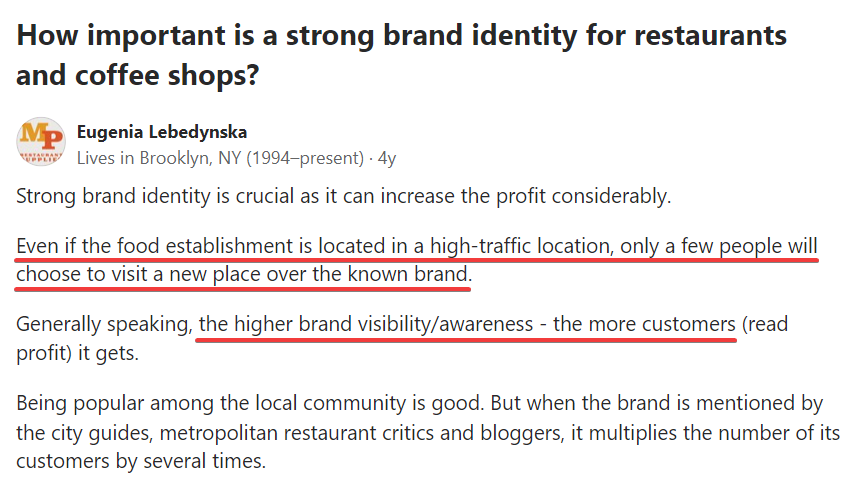
Source: Quora
As it’s rightly pointed out, brand awareness can lead to an increased number of visitors to your establishment, eventually translating to higher revenue and a more sustainable business model.
But how can a restaurant build brand awareness effectively? A powerful avenue for this is the utilization of social media.
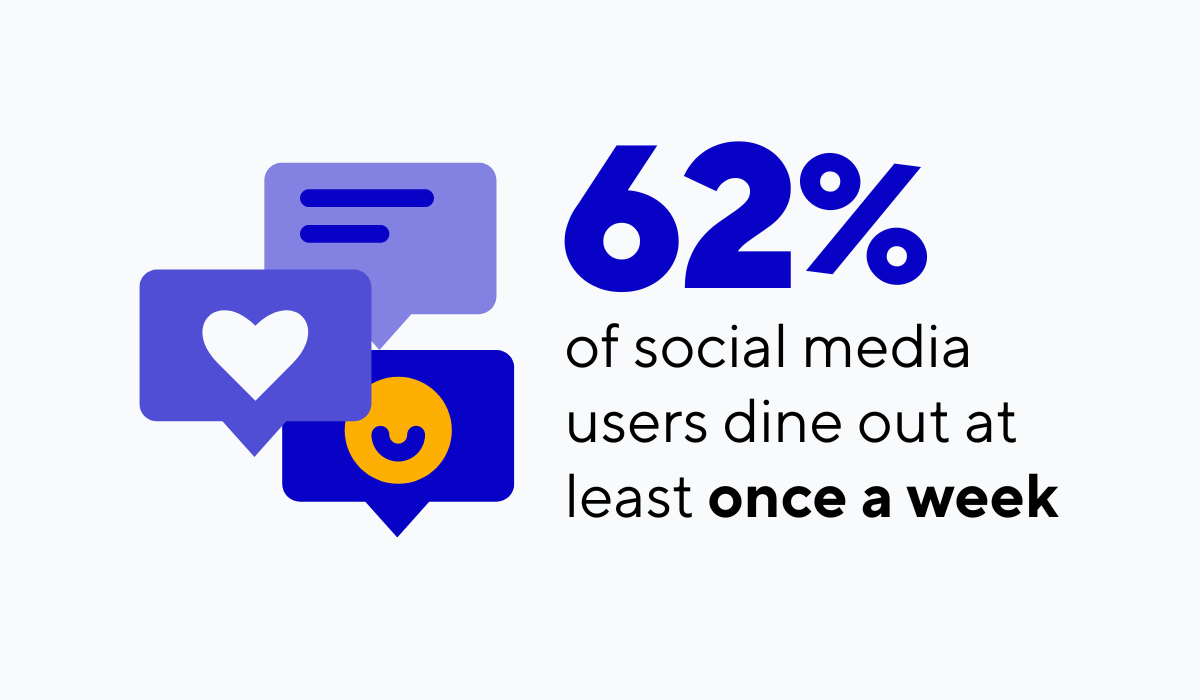
Source: Grande
As the data shown above illustrates, social media users frequently dine outside, compared to only 39% of non-users who do so.
So, one strategy for building a strong brand is to utilize the broad reach of social media platforms.
Take, for example, Sketch, a restaurant based in London that has brilliantly leveraged Instagram to build an extensive following, amassing nearly 450 thousand followers.

Source: Sketch on Instagram
How did they achieve this enormous follower count?
You might think that a large advertising budget is what sets this restaurant apart from the competition.
While ad campaigns are certainly crucial for raising awareness, there are a variety of techniques that you can use to make your eatery well-known and increase your sales without buying ads.
Sketch, for instance, is incredibly active on social media with almost 3000 beautifully-curated posts.
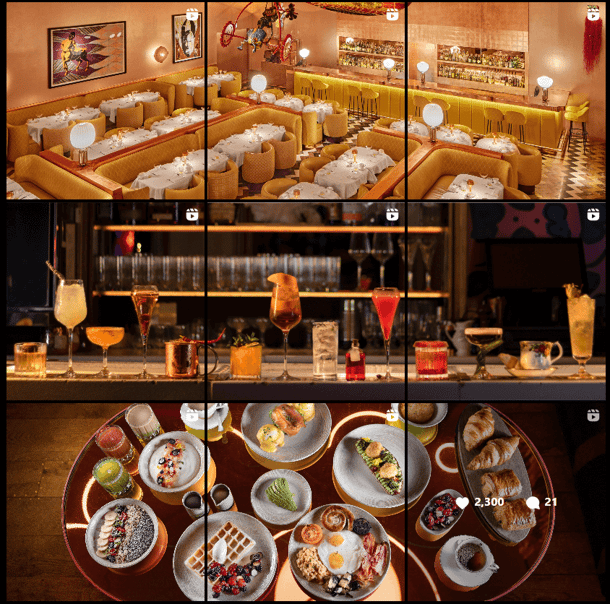
Source: Sketch on Instagram
Sketch’s Instagram profile is adorned with captivating images that showcase the establishment’s atmosphere, exotic beverages, and delectable dishes.
This carefully crafted visual narrative conveys an experience that entices prospective customers, thereby bolstering brand awareness.
While Instagram has proven to be effective for Sketch, it is vital to recognize that there are numerous other social media platforms, as well as alternative channels such as email marketing.
The key is to identify which medium resonates with your target audience best, and focus on building your presence there. Do so, and hopefully, your restaurant will become a household name.
Capture the Interest of Prospective Customers
So you’ve attracted customers and made them aware of your restaurant. Now you need to grab their attention and start nurturing a relationship with them.
Capturing the interest of potential customers is the second stage of developing a restaurant sales funnel.
Essentially, you can consider brand awareness as laying the groundwork, and now you are trying to build upon it. It’s like capturing the curiosity of one of your diners with a delicious appetizer.
One way of engaging your customers is through the use of introductory videos.
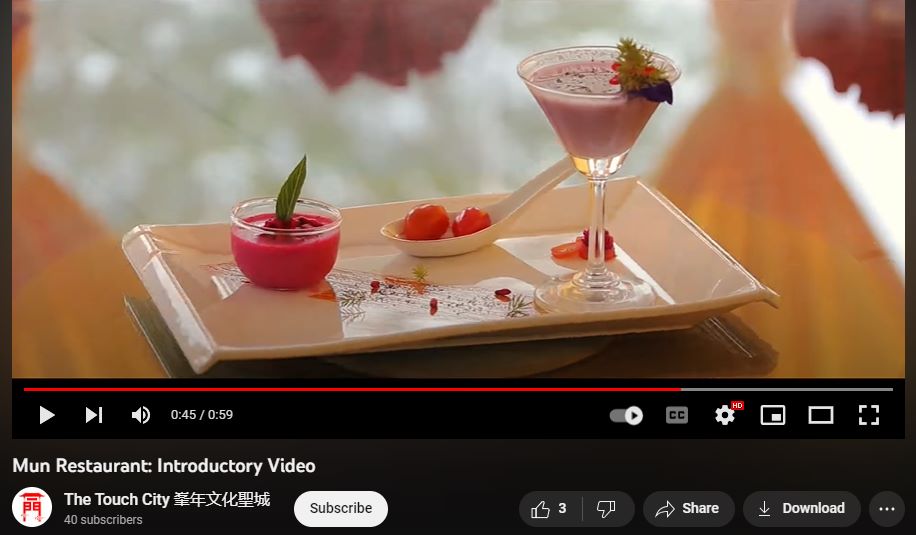
Source: The Touch City on Youtube
For instance, Mun Restaurant has employed a short video to elegantly showcase the interiors of the restaurant and, more importantly, their beautifully presented dishes.
Check out that frame in the image above. Doesn’t it make you want to reserve a table?
Speaking of dishes, it is also essential to consider the charm of your menu.
Showcasing your unique menu to the public in the right way can serve as a significant draw for potential customers who get interested in trying out your delicious meals.
Also, it can be a great way to show off your restaurant’s character.
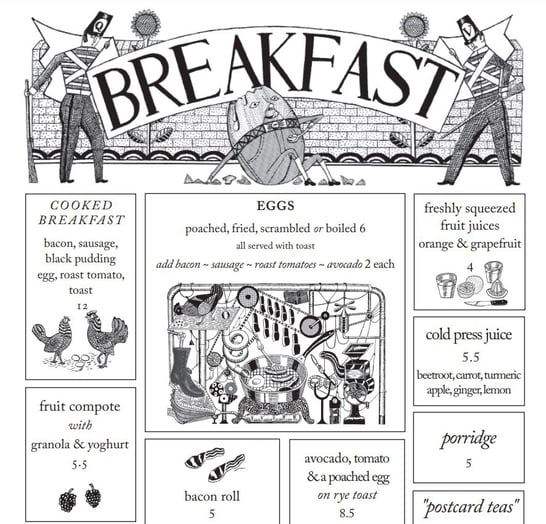
Source: Quo Vadis
For example, look at the image above from the Quo Vadis restaurant, which depicts a beautifully illustrated menu.
The engaging design and lively characters complement the allure of the breakfast dishes, creating an inviting atmosphere for prospective customers.
Presenting your restaurant’s atmosphere and menu items is great, but it’s crucial to understand that patrons seek more than just culinary delights.
They crave a pleasant and exciting dining experience.
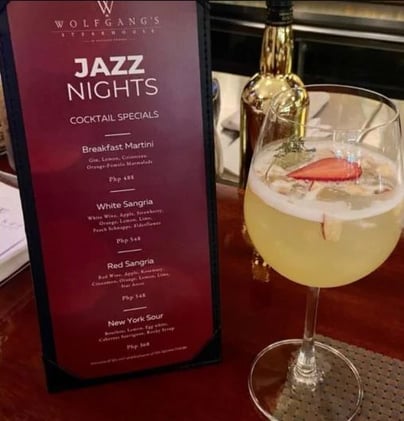
Source: When in Manila
Consider the image above, showing Wolfgang’s Steakhouse and the special cocktail menu for its Jazz Nights event.
The combination of live music, refreshing cocktails, and their well-known and delicious steaks is a recipe for a unique night out.
Creating events like these can really set your restaurant apart from the competition by offering diners a memorable experience they can get nowhere else.
To summarize, the orchestrated effort of presenting your restaurant, your tantalizing menu, and your memorable events, is key for moving potential customers further down the sales funnel and closer to your restaurant doors.
Incentivize Customers to Visit Your Restaurant
Building upon the interest you’ve garnered from potential customers, the next vital step is to provide incentives that will compel them to visit your restaurant.
It's essential to realize that capturing people’s attention is not enough. Your customers must be provided with enough motivating reasons to actually make a reservation or walk into your establishment.
This phase of a sales funnel is where you tip the scale in your favor.
Common methods to incentivize customers to visit can be anything from discounts and promotions to limited-time offers.
The reason these tactics are so effective is that they provide perceived value. Consumers are more likely to dine at your restaurant if they feel they are getting more for their money.
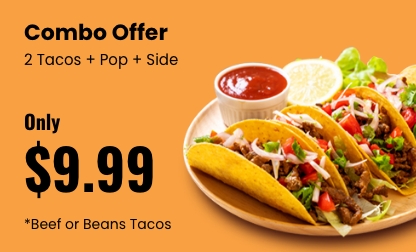
Source: The Taco Station
Take a look at The Taco Station’s taco combo offer.
The combination of the affordable price and a large and fulfilling meal, portrayed through an appetizing image, appeals to a customer’s desire for value and convenience.
Or, take a look at the following Steak House offer.
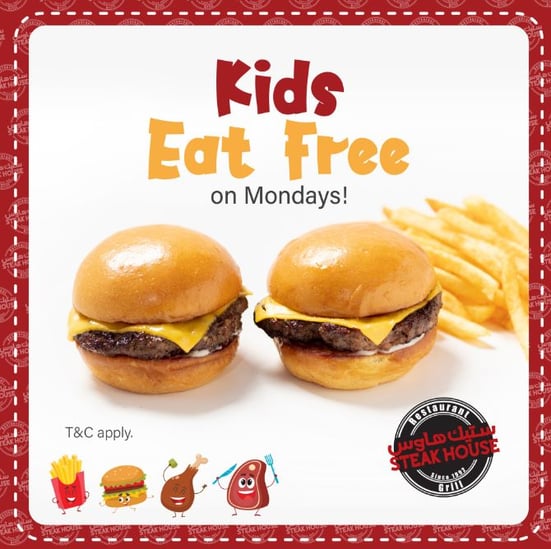
Source: Steak House on Facebook
Focusing on which audience you target with your promotions can go a long way. The “Kids Eat Free” promotion, for instance, is tailored for families.
It addresses the particular needs of parents seeking a cost-effective dining option for the entire family.
This targeted approach resonates with customers and helps in fostering a sense of connection with your business, as they are likely to appreciate and remember a dining establishment that caters to their specific needs.
Whichever type of offer you decide on making, consider making it available for a fixed period of time only.
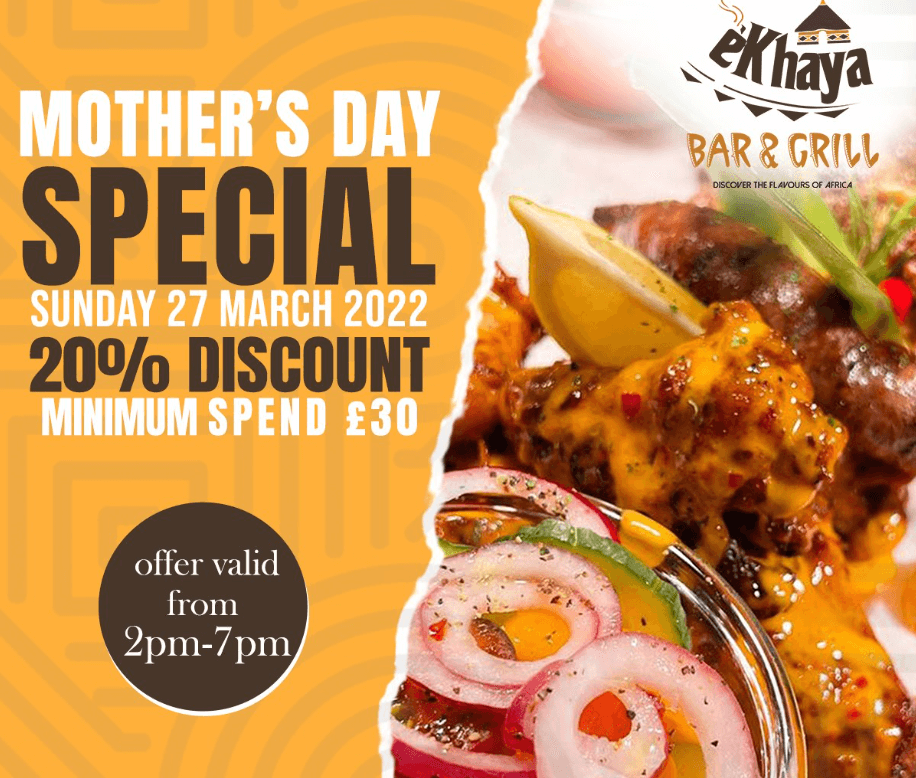
Source: Èkhaya on Facebook
The previous image depicts a Mother’s Day Special offered by Èkhaya, available only on the 27th of March within a specific time frame during the day.
Limited-time offers such as this one create a sense of urgency, acting as a catalyst in the customer’s decision-making process.
Guests on the fence stuck deciding whether they should visit your establishment will see the ticking clock as a nudge to make up their minds and grab the opportunity before it slips away.
By meticulously crafting incentives that cater to the interests and needs of your customers, you can significantly enhance the likelihood of turning interested patrons into actual customers.
Take Action to Encourage Repeat Customers
Having successfully attracted guests to dine at your establishment, it’s now imperative that you ensure they keep returning.
So far, our discussion has centered around acquiring new customers.
Though incredibly important, the cost associated with this process, such as buying advertisements and organizing promotions and discounts, can be high.
Consider the data shown below.
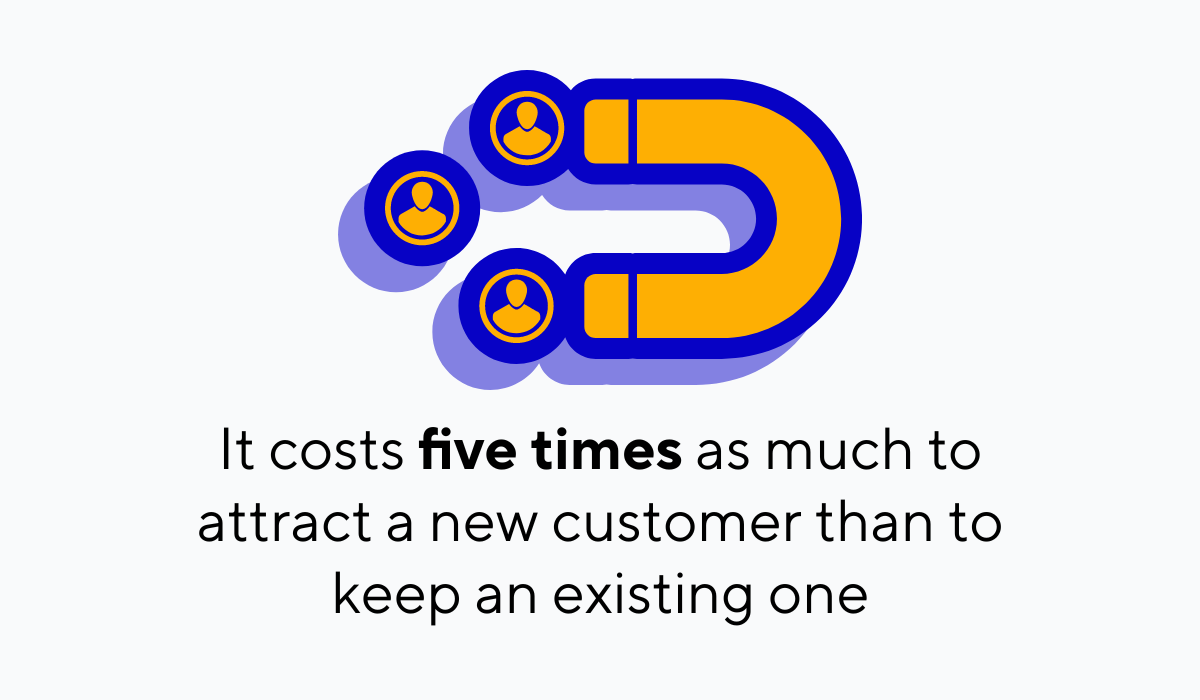
Source: invesp
As this information makes clear, retaining existing customers is a lot cheaper than acquiring them, but the benefits are equally, if not more, significant. In fact, this practice is critical for establishing a loyal customer base.
Remember those enticing offers and event ideas we discussed previously? One way to boost repeat visitors is to send them to customers through an email newsletter.
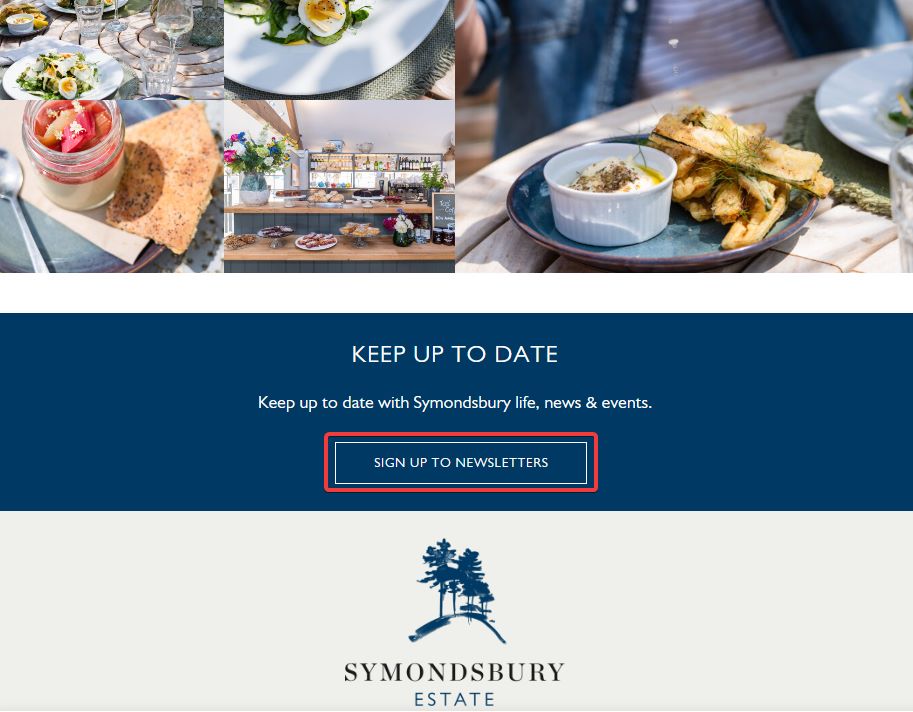
Source: Simondsbury Estate
An effective method of encouraging customers to subscribe to your newsletter is incorporating a sign-up button directly on your website or using a reservation system to gather emails with each booking.
This way, you maintain a line of communication and can attract diners with exclusive offers.
And why not combine a newsletter with a great loyalty program—your patrons would certainly like that.
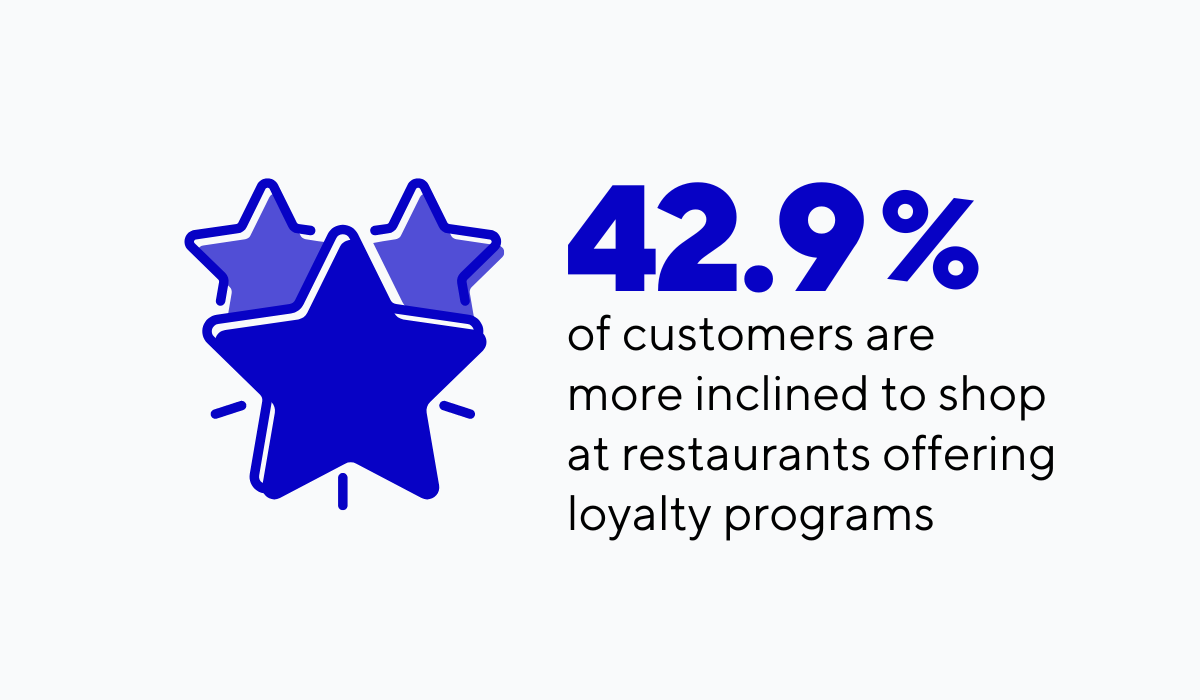
Source: PYMNTS
The statistics clearly show that customers appreciate loyalty programs and are likely to return to your eatery to reap the rewards you will offer.
These programs are highly effective because they create a sense of value among customers and stimulate repeat visits and greater spending.
There are various loyalty programs to explore, and some of the most common types are shown below.
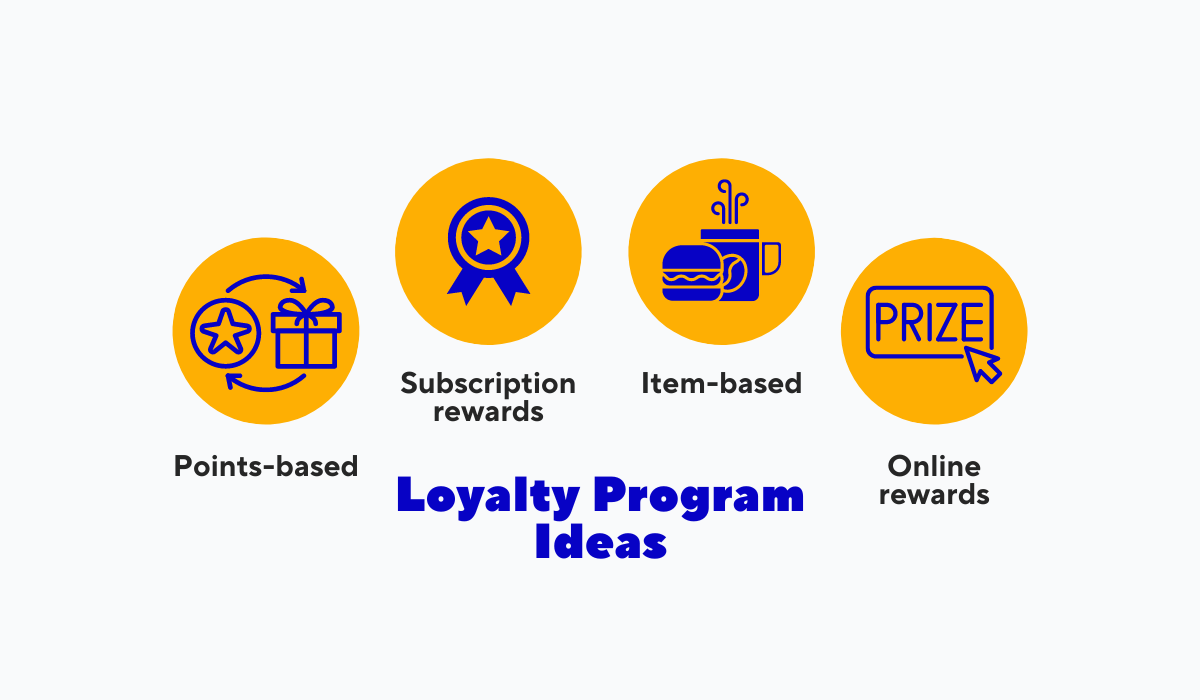
Source: Tablein
One widely-adopted model is the points-based system, wherein customers accumulate points with each purchase, which can then be exchanged for rewards.
For instance, take a look at the rewards you can earn from Wendy’s program.
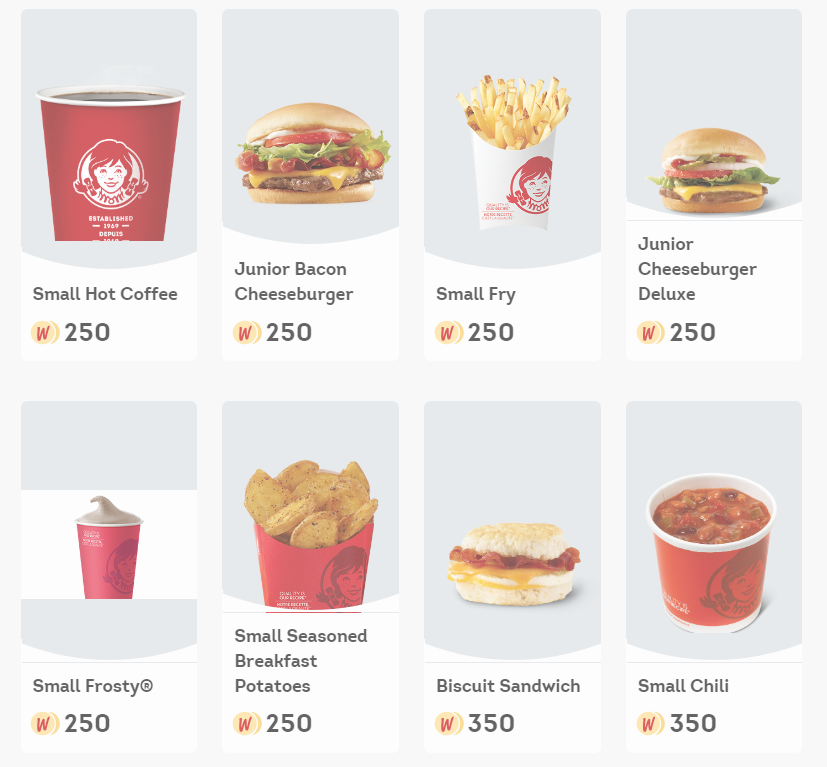
Source: Wendy’s
Customers make purchases and earn points. Once they get enough points, the appeal of getting a reward encourages them to visit your establishment and redeem it.
It is a straightforward yet highly efficient strategy to ensure customer loyalty.
As covering all other loyalty programs isn’t within the scope of this article, you can check out some more ideas here.
Overall, fostering a returning customer base requires thought and creativity but is fundamental to sustaining a thriving restaurant. And with this step, you’ve completed your restaurant’s sales funnel.
Conclusion
The aim of this article was to equip you with sufficient knowledge and understanding to get you started in creating an effective restaurant sales funnel.
Hopefully, you now grasp the significance of each of the four stages we covered and how you can use them to build awareness, capture interest, incentivize bookings, and nurture long-lasting customer relationships.
Optimizing your restaurant operations in light of what you’ve learned can serve as the groundwork for enhancing your customer experience and, consequently, your bottom line.
So, start building your funnel one step at a time, and watch how you slowly reach your restaurant’s full sales potential.
Get a 30-day Exclusive Trial
As a Tablein blog reader, you’re eligible for an exclusive 30-day free trial to experience our simple reservation solution for your restaurant.
Enter your business email, and we’ll send you all the steps needed to create your account.
Share this
You may also like

12 Great Ideas for Improving Restaurant Sales

7 Best Restaurant Marketing Strategies to Know and Use
